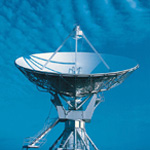Radar and wind turbines – learning to live together
 Some of the most significant objections to wind farms have come from aviation authorities.
Some of the most significant objections to wind farms have come from aviation authorities.
Rotating wind turbines have been found to confuse radar systems, potentially compromising air traffic control. Air traffic controllers say they have to differentiate between aircraft and wind turbines.
The issue has become a major headache for wind farm developers in the UK in particular – a crowded island with a busy network of both civilian flight paths and air force flying zones. At one stage trade association Renewable UK estimated that around 40 large wind farm projects were being delayed because of objections from the aviation sector.
However, solutions are being developed which could help resolve the problem. One proposal is an adaptation to the radar system used by the National Air Traffic Service (NATS), which monitors all civilian flights over the UK’s airspace network. Algorithms have been developed which enable the system to discriminate between turbines and aircraft. Research and development work should be completed by this July, hopefully followed by implementation.
In other European countries situations vary significantly. In France, Belgium and Sweden, radar issues are reported to be delaying a significant amount of wind farm authorisations. In Denmark, on the other hand, where wind provides 25% of the country’s power – it has never become an issue, according to the Danish Wind Industry Association. Other countries with a substantial amounts of wind, such as Portugal and Spain, have not experienced problems either.
Read more about wind turbines and radar in the latest Wind Directions.






